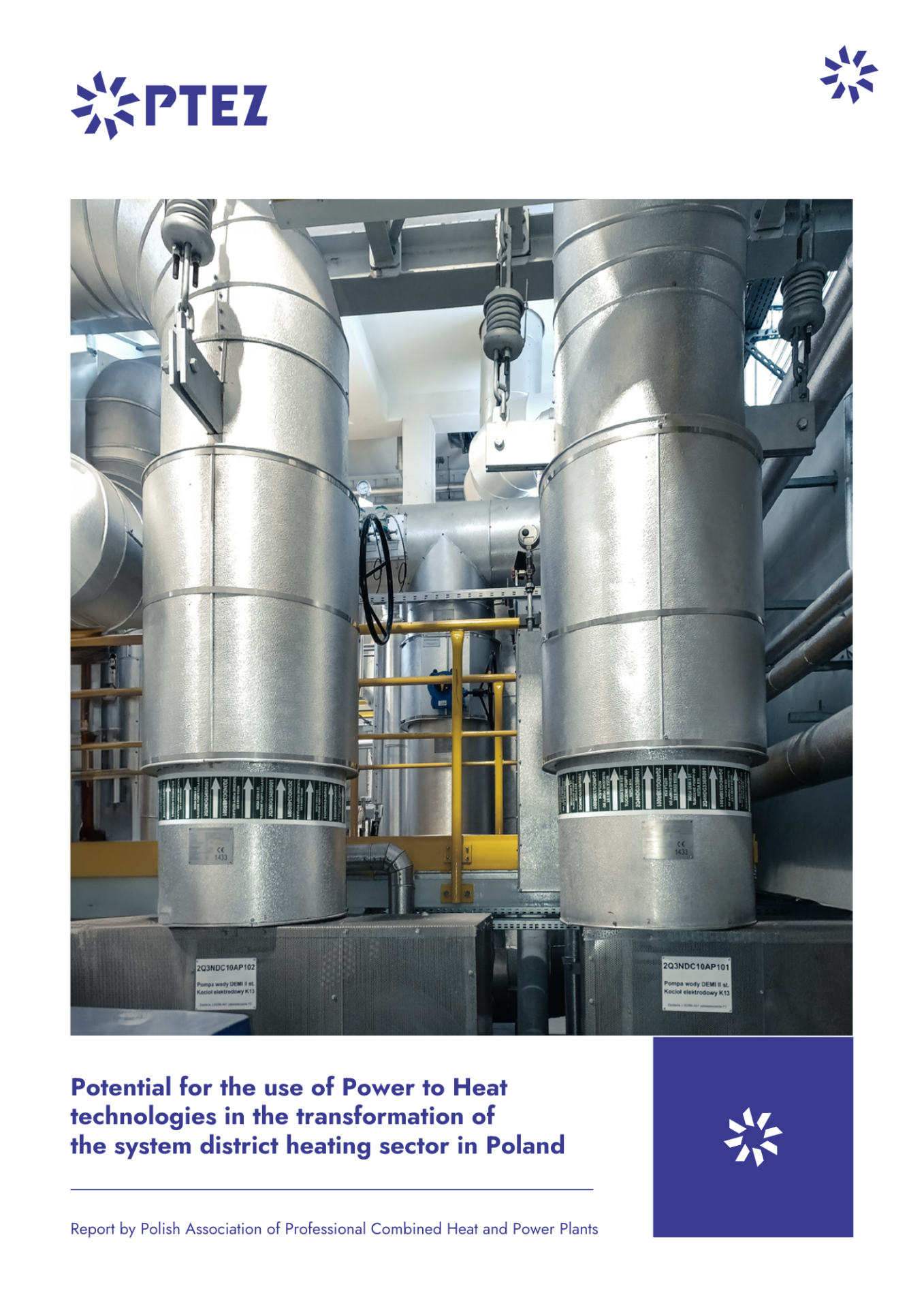Meeting climate and energy policy targets poses a range of challenges for the district heating sector. In the first place, it will require the introduction of new zero- and low-carbon technologies to replace fossil fuel-based generating units.
Meeting the new criteria for an efficient district heating system, including increasing the share of RES energy, is a key challenge for energy companies operating in the district heating sector. Also, the price competitiveness of system heat must be ensured. In order to achieve these goals, it is necessary to electrify the district heating sector through the implementation of Power to Heat technologies. Increasing the share of RES energy in district heating systems depends not only on the availability of appropriate technologies, but also on national regulations which should support the decarbonization process of the sector.
Power to Heat technologies include primarily heat pumps and electrode boilers that convert electricity to heat or cold. At the same time, taking into account the specificity of electricity generation related to a large number of weather-dependent RES plants connected to the National Power System, an important role of heat storage is expected.
Responding to the need to decarbonize the district heating sector using RES electricity, the Polish Association of Commercial Combined Heat and Power Plants (PTEZ) prepared an overview of the potential for the use of Power to Heat technologies in the transformation of the system district heating sector in Poland. In this report, PTEZ experts analyzed:
- the characteristics of the district heating sector in Poland (in Chapter 2);
- available Power to Heat technologies, described their principle of operation and experience with their use (in Chapter 3);
- the regulatory environment in the context of the use of Power to Heat technologies, resulting from EU and national regulations (in Chapter 4);
- market conditions for the use of RES electricity in the district heating sector (in Chapter 5);
- the impact of the Power to Heat technologies on the achievement of the climate and energy policy targets and the functioning of the National Power System (in Chapter 6);
- and developed recommendations for the implementation of RED III and EED, and for regulatory changes in the scope of heat support and tariff systems (in Chapter 7).
The original analysis of the Power to Heat technology scenarios in the system district heating sector was prepared on the basis of a model aimed at determining realistic options of the development of the system district heating sector (for the period 2024–2050). The scenarios were developed in such a way that, when implementing the investment process in several local district heating systems, the requirements of the climate and energy policy and the expectations of the system heat consumers can be met. One of the scenarios is based on the failure to meet the requirements of an efficient district heating system for a significant number of such systems in Poland and it is used to determine negative effects of abandoning the transformation.
